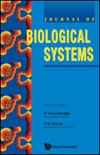BIFURCATION ANALYSIS AND CHAOS CONTROL OF DISCRETE PREDATOR–PREY MODEL WITH ADDITIVE ALLEE EFFECT
IF 1.3
4区 数学
Q3 BIOLOGY
引用次数: 0
Abstract
This paper presents a study of a discrete prey–predator model with additive Allee effect. The model is discretized using the forward Euler method, and the system is analyzed using bifurcation theory and chaos control. The equilibrium point of the discrete system is obtained through equilibrium analysis, and the stability of the equilibrium point is determined by analyzing the parameter conditions. The study also establishes the existence and direction of Neimark–Sacker bifurcation at the positive equilibrium point. The paper proposes two control strategies to manage chaotic behavior and Neimark–Sacker bifurcation: exponential control and hybrid feedback control. These control methods are demonstrated to be effective in controlling the chaotic behavior and bifurcation of the system through numerical simulation. Overall, the results of the study provide important insights into the dynamics of the discrete prey–predator model with additive Allee effect, as well as effective methods for controlling chaos and bifurcation in the system.具有加法等位基因效应的离散捕食者-猎物模型的分岔分析与混沌控制
本文研究了一个具有加性阿利效应的离散猎物-捕食者模型。采用正演欧拉法对模型进行离散化,并利用分岔理论和混沌控制对系统进行分析。通过平衡分析得到离散系统的平衡点,并通过分析参数条件确定平衡点的稳定性。研究还确定了正平衡点处 Neimark-Sacker 分岔的存在和方向。论文提出了两种控制策略来控制混沌行为和 Neimark-Sacker 分叉:指数控制和混合反馈控制。通过数值模拟,证明了这些控制方法能有效地控制系统的混沌行为和分岔。总之,研究结果为研究具有加性阿利效应的离散捕食者-捕食者模型的动力学提供了重要启示,也为控制该系统的混沌和分岔提供了有效方法。
本文章由计算机程序翻译,如有差异,请以英文原文为准。
求助全文
约1分钟内获得全文
求助全文
来源期刊
CiteScore
2.80
自引率
12.50%
发文量
31
审稿时长
1 months
期刊介绍:
The Journal of Biological Systems is published quarterly. The goal of the Journal is to promote interdisciplinary approaches in Biology and in Medicine, and the study of biological situations with a variety of tools, including mathematical and general systems methods. The Journal solicits original research papers and survey articles in areas that include (but are not limited to):
Complex systems studies; isomorphies; nonlinear dynamics; entropy; mathematical tools and systems theories with applications in Biology and Medicine.
Interdisciplinary approaches in Biology and Medicine; transfer of methods from one discipline to another; integration of biological levels, from atomic to molecular, macromolecular, cellular, and organic levels; animal biology; plant biology.
Environmental studies; relationships between individuals, populations, communities and ecosystems; bioeconomics, management of renewable resources; hierarchy theory; integration of spatial and time scales.
Evolutionary biology; co-evolutions; genetics and evolution; branching processes and phyllotaxis.
Medical systems; physiology; cardiac modeling; computer models in Medicine; cancer research; epidemiology.
Numerical simulations and computations; numerical study and analysis of biological data.
Epistemology; history of science.
The journal will also publish book reviews.

 求助内容:
求助内容: 应助结果提醒方式:
应助结果提醒方式:


